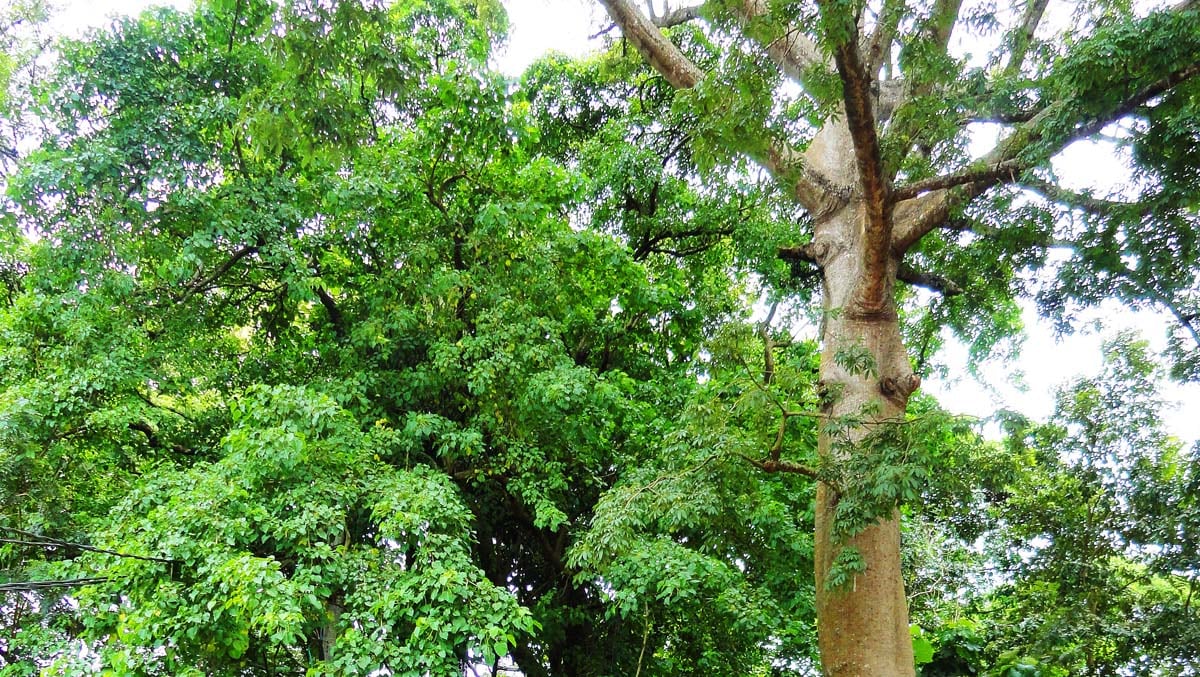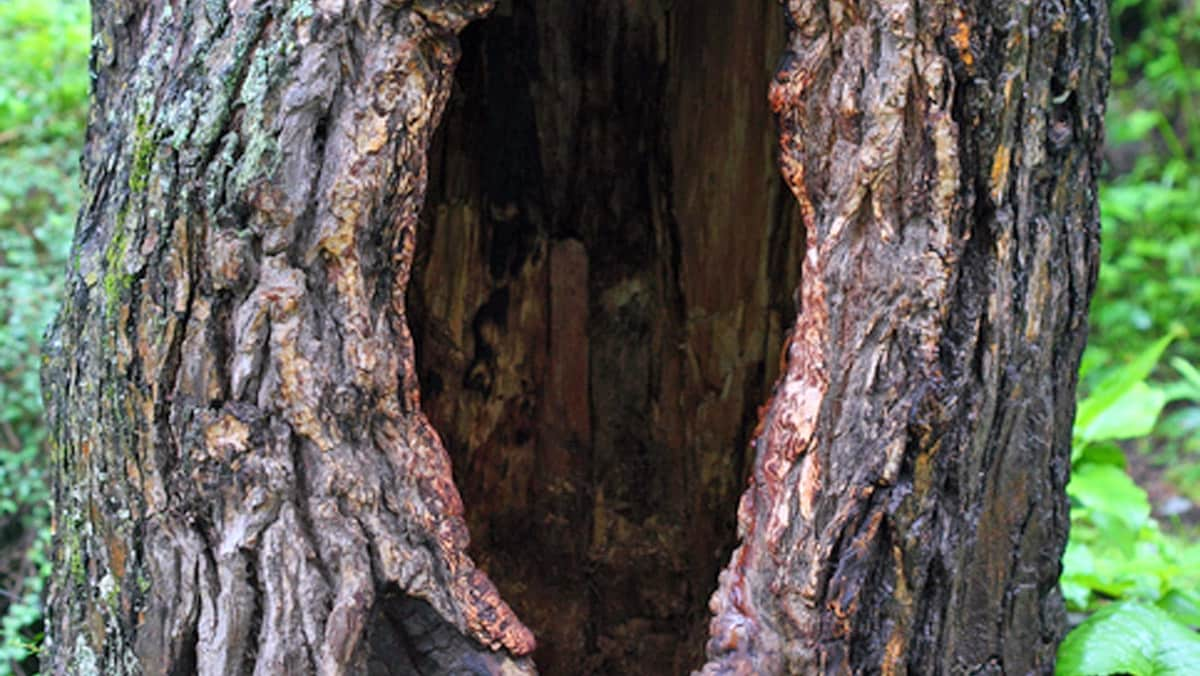What to know
- Tree holes can be found in the trunk or branches of a tree.
- Tree holes can easily fill with water.
- They are a perfect place for mosquitoes to lay eggs.
- Fill tree holes to reduce mosquitoes in your yard.

How to fill a tree hole
First, determine if the tree hole holds water. Tree holes that do not hold water may provide nesting sites for birds or other wildlife. They do not need to be filled.
If the tree hole holds water, fill the hole with expanding foam used for home insulation projects. Expandable foam is light weight, seals the hole, keeps it from collecting water, and is flexible enough to move with the tree.
- Look for a product that can fill big gaps and is water resistant.
- Follow directions on the product label when applying.
- You do not need to clean out the tree hole before filling.

When filling a tree hole
- DO NOT fill tree holes with gravel or sand. These materials:
- Do not prevent water from collecting in the tree.
- Can become a safety issue if the tree is cut down.
- DO NOT fill tree holes with concrete. Concrete is not flexible, adds weight to the tree, and can damage it.
- DO NOT drill drain holes in the tree. This can damage the tree.
Other yard maintenance tips
In addition to filling tree holes, follow these simple yard maintenance tips to reduce mosquitoes in your yard.
- Once a week, empty and scrub containers with standing water, including empty flowerpots, bird baths, and trash containers. These steps should remove mosquito eggs from the inner walls of the container.
- Drain water from pools when not in use.
- Remove water from tarps used to cover items in the yard.
- Mow your lawn regularly and cut down weeds near your home.
- Keep rain barrels tightly covered or screened.
- Apply larvicide to containers with aquatic plants and to plants that hold water, such as bromeliads.
